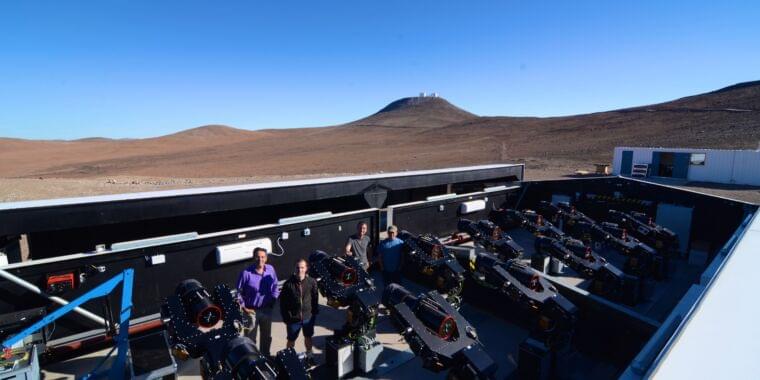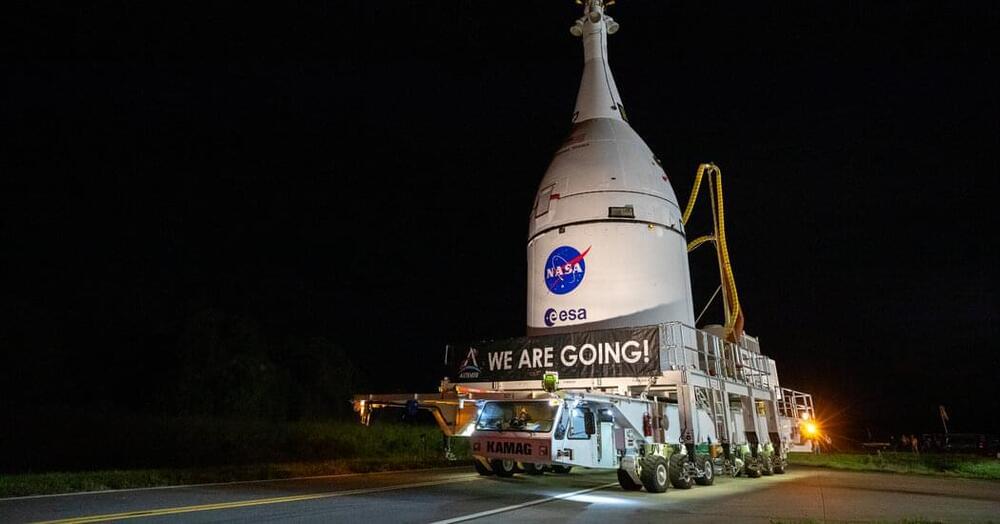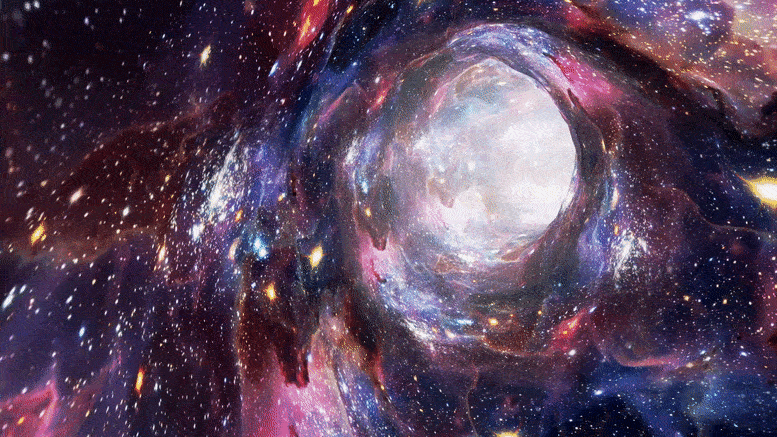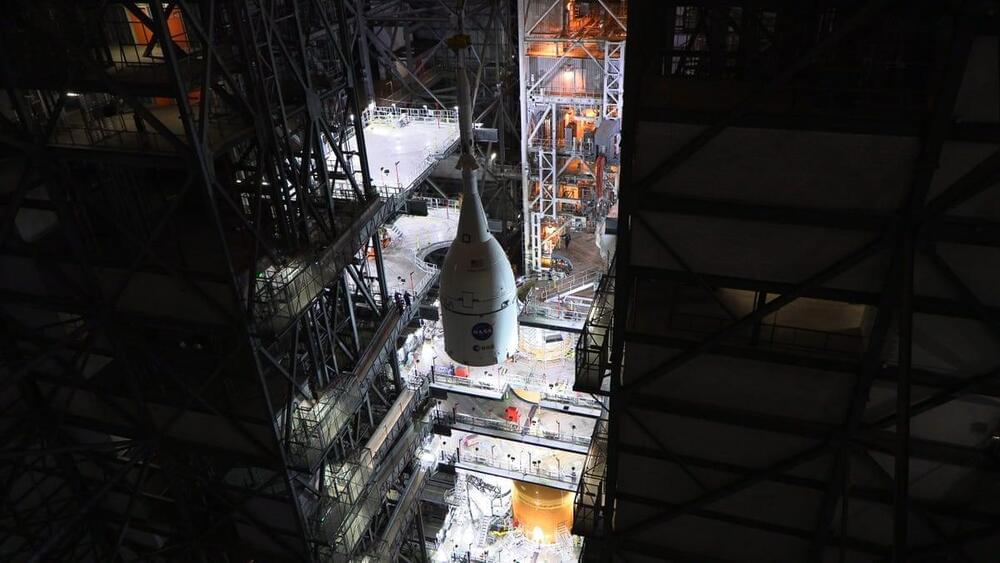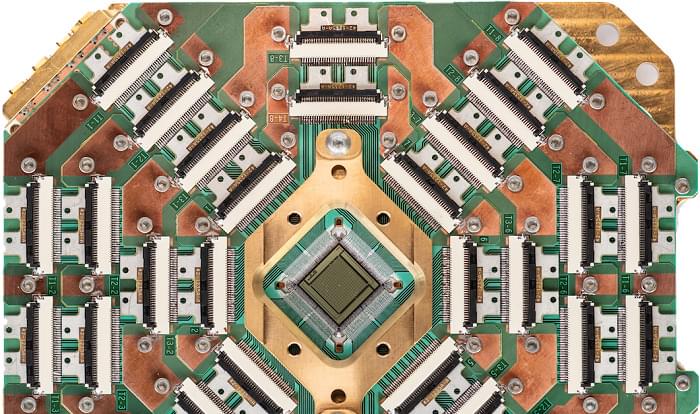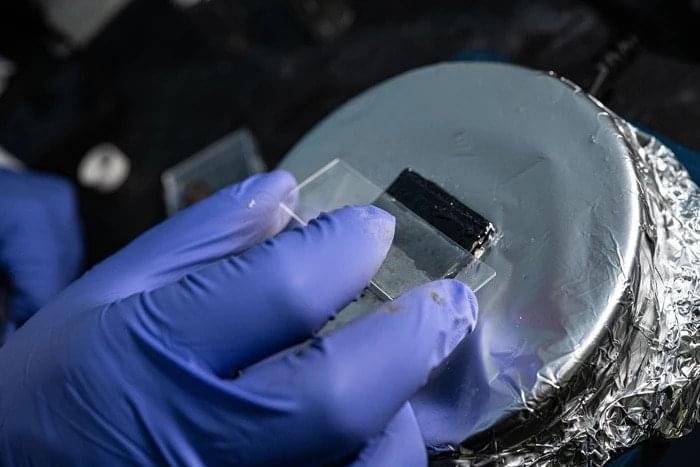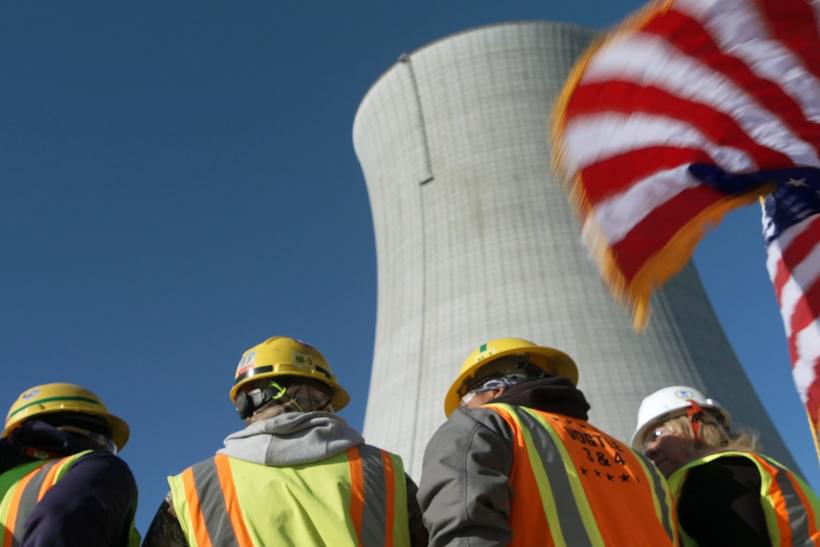Page 5689
Oct 23, 2021
NASA Plans February Moon Launch With Giant Rocket
Posted by Genevieve Klien in category: space travel
A flight of the Space Launch System and Orion capsule without astronauts aboard is planned for early next year, a first, long-delayed step toward returning astronauts to the moon’s surface.
Oct 23, 2021
A Vast “Magnetic Tunnel” May Surround Earth and Our Entire Solar System
Posted by Quinn Sena in categories: physics, space
A University of Toronto astronomer’s research suggests the solar system is surrounded by a magnetic tunnel that can be seen in radio waves.
Jennifer West, a research associate at the Dunlap Institute for Astronomy & Astrophysics, is making a scientific case that two bright structures seen on opposite sides of the sky – previously considered to be separate – are actually connected and are made of rope-like filaments. The connection forms what looks like a tunnel around our solar system.
The data results of West’s research have been published in the Astrophysical Journal.
Oct 23, 2021
Something Really Wants our Attention. One Object Released 1,652 Fast Radio Bursts in 47 Days
Posted by Quinn Sena in category: space

Researchers working with the 500-Meter FAST telescope in China reported 1,652 fast radio bursts in 47 days coming from a single source.
The energetic phenomena known as Fast Radio Bursts (FRBs) are one of the greatest cosmic mysteries today. These mysterious flashes of light are visible in the radio wave part of the spectrum and usually last only a few milliseconds before fading away forever. Since the first FRB was observed in 2,007 astronomers have looked forward to the day when instruments of sufficient sensitivity would be able to detect them regularly.
Oct 23, 2021
NASA Completes Stacking of Next-Gen Rocket, Revealing an Absolute Beast
Posted by Quinn Sena in categories: computing, quantum physics
Earlier this month D-Wave Systems, the quantum computing pioneer that has long championed quantum annealing-based quantum computing (and sometimes taken.
Oct 23, 2021
D-Wave Embraces Gate-Based Quantum Computing; Charts Path Forward
Posted by Quinn Sena in categories: computing, quantum physics
Earlier this month D-Wave Systems, the quantum computing pioneer that has long championed quantum annealing-based quantum computing (and sometimes taken heat for that approach), announced it was expanding into gate-based quantum computing.
Surprised? Perhaps we shouldn’t be. Spun out of the University of British Columbia in 1,999 D-Wave initially targeted gate-based quantum computing and discovered how hard it would be to develop. The company strategy morphed early on.
“I joined in 2005 when the company was first transitioning from a gate-model focus to quantum annealing focus,” recalled Mark Johnson, now vice president of quantum technologies and systems products. “There was still this picture that we wanted to find the most direct path to providing valuable quantum applications and we felt that quantum annealing was the was the way to do that. We felt the gate model was maybe 20 years away.”
Oct 23, 2021
Physicists Created a Supernova Reaction on Earth Using a Radioactive Beam
Posted by Quinn Sena in categories: cosmology, physics
For the first time, physicists have been able to directly measure one of the ways exploding stars forge the heaviest elements in the Universe.
By probing an accelerated beam of radioactive ions, a team led by physicist Gavin Lotay of the University of Surrey in the UK observed the proton-capture process thought to occur in core-collapse supernovae.
Not only have scientists now seen how this happens in detail, the measurements are allowing us to better understand the production and abundances of mysterious isotopes called p-nuclei.
Oct 23, 2021
Restaurants prep for long-term labor crunch by turning to robots to work the fryer, shuttle food to tables
Posted by Genevieve Klien in categories: business, food, robotics/AI
Ron Hetrick, a labor economist at EMSI and one of the report’s authors, said that as a whole the industry is not yet able to bring robotics in at a meaningful level. But future restaurant business models will continue to evolve as labor challenges remain. He expects business models could change so that the amount of service customers need drops.
“You will probably lose out on the amount of restaurants that you can go sit in,” Hetrick said.
Miso’s Bell said that software engineers are always in high demand, but the company is facing “normal challenges” in terms of worker availability. The current supply chain crunch is more of an immediate concern.
Oct 23, 2021
This New Flexible Alloy Can Heal Itself And Prevent Steel Corrosion
Posted by Shailesh Prasad in categories: biological, materials
Scientists at Rice University have created a material that will protect steel from corrosion. In fact, it will also be flexible and heal itself when damaged.
This material will be used as a coating and is made from a lightweight sulfur-selenium alloy. It will be able to block moisture and chlorine-like zinc-and chromium-based coatings, protect steel under seawater-like conditions like polymer-based coatings, keep it from microbe-induced corrosion.
The experiments carried out before the results comprised putting small slabs of common mild steel coated with sulfur-selenium alloy in seawater for a month, along with an uncoated slab of steel as a control. The coated steel did not oxidize.
Oct 23, 2021
The U.S Department Of Energy Is Funding Projects To Convert Nuclear Energy Into Green Hydrogen
Posted by Shailesh Prasad in categories: chemistry, nuclear energy
Nuclear energy is becoming more popular by the day and is being considered an eco-friendly option for the energy crisis we are going through. The US Department of Energy has dedicated US$20 million to a project that is based in Arizona that will use nuclear energy to make green hydrogen. They will be testing its capability as a liquid backup battery and as a secondary product for nuclear power installations.
The project will be headed by PNW Hydrogen LLC. They will build hydrogen production plants on-site at the Palo Verde Nuclear Generating Station in Phoenix, Arizona. Storage tanks will be used that will be able to store six tonnes of hydrogen onsite, representing about 200 MWh of energy that can be converted back into electricity and given to the grid when demand is more than usual.
The hydrogen will also be “used to make chemicals and other fuels,” and the project will gauge how nuclear stations can export and sell extra energy as an extra revenue stream. It is said that in the future, baseline power providers like nuclear stations will only be needed when the sun’s not shining or the wind’s not blowing. Hence, it makes sense to use this technology to make use of it and produce energy in the downtime.
